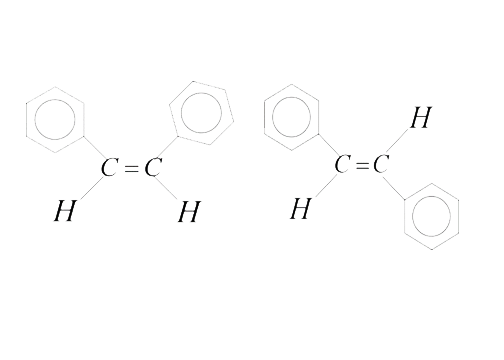How many statements are correct out of the following statements?
I. Ramapithecus was more man like while Dryopithecus was more ape like.
II. Two mya Australopithecus probably lived in eastafrican grasslands.
III. Homohabilis probably eat meat
IV. The neanderthal man with brain capacity of 900 CC
One
two
Three
four
The correct Answer is:B
Similar Questions
Correct the statement if it is incorrect:
Ramapithecus was more ape-like while Dryopithecus was more man-like.
View SolutionRead the following statements about human evolution:
I. The skull of baby human is more like an adult chimpanzee skull than an adult human skull.
II. About two mya, Australopithecus probably lived in East African grassland.
III. The Neanderthal man with a brain size of 1400cc lived in the near East and Central Africa between 1,00,000-40,000 year back.
IV. Pre-historic cave art developed about 10,000 year ago.
How many statements is/are correct?
View Solution
Knowledge Check
How many statements are correct out of the following statements?
I. Ramapithecus was more man like while Dryopithecus was more ape like.
II. Two mya Australopithecus probably lived in eastafrican grasslands.
III. Homohabilis probably eat meat
IV. The neanderthal man with brain capacity of 900 CCAOneBtwoCThreeDfourRead the following statements about human evolution:
I. The skull of baby human is more like an adult chimpanzee skull than an adult human skull.
II. About two mya, Australopithecus probably lived in East African grassland.
III. The Neanderthal man with a brain size of 1400cc lived in the near East and Central Africa between 1,00,000-40,000 year back.
IV. Pre-historic cave art developed about 10,000 year ago.
How many statements is/are correct?AFourBThreeCTwoDOneGiven below are four statements (i)-(iv). Which two of the following statements are correct ?
(i) It is estimated that more than 70 percent of the world livestock population is in India and China.
(ii) Stringent cleanliness and hygiene (both of the cattle and the handless) are of paramount importance while milking, storage and transport of the milk and products.
(iii) Out-breeding is the breeding between animals of the same breed only.
(iv) Corsses between different breeds is called inbreeding.A(i) and (ii)B(ii) and (iv)C(i) and (iv)D(ii) and (iii)
A. The conditions primitive on earth (before the origin of life) were :
low temperature, volcanic storms, reducing atmosphere containing Ch4,NH3, etc.
B. Cheetah and humans share similarities in the pattern of bones of forelimbs.
C. In a collection of moths made in the 1850s i.e., before industrialization set in, it was observed that there were more dark-winged moths on trees than white-winged moths.
D. Branching descent and natural selection are the two key concepts of Darwinian theory of evolution.
E. The Neanderthal man with a brain size of 1400 cc lived in east and central Asia 25,000-10,000 years age.
Which set of given statements are correct ?
View SolutionHow many statements are true for the following pair of compounds ?

Cis Trans
(i) The dipole moment of trans isomer is zero
(ii) The boiling point of cis isomer is more than trans isomer
(iii) Cis isomer is more stable than the trans isomer
(iv) These are also called configurational diastereomers
(v) These are readily interconvertible under normal conditions
(vi) The melting point of trans isomer is more than the cis isomer
(vii) Trans isomer is more soluble than cis isomer in polar solvents
View SolutionHow many statements are true for the following pair of compounds ?

Cis Trans
(i) The dipole moment of trans isomer is zero
(ii) The boiling point of cis isomer is more than trans isomer
(iii) Cis isomer is more stable than the trans isomer
(iv) These are also called configurational diastereomers
(v) These are readily interconvertible under normal conditions
(vi) The melting point of trans isomer is more than the cis isomer
(vii) Trans isomer is more soluble than cis isomer in polar solvents
View SolutionGiven below are four statements (i)-(iv). Which two of the following statements are correct ?
(i) It is estimated that more than 70 percent of the world livestock population is in India and China.
(ii) Stringent cleanliness and hygiene (both of the cattle and the handless) are of paramount importance while milking, storage and transport of the milk and products.
(iii) Out-breeding is the breeding between animals of the same breed only.
(iv) Corsses between different breeds is called inbreeding.
View SolutionA. The conditions primitive on earth (before the origin of life) were : low temperature, volcanic storms, reducing atmosphere containing Ch4,NH3, etc.
B. Cheetah and humans share similarities in the pattern of bones of forelimbs.
C. In a collection of moths made in the 1850s i.e., before industrialization set in, it was observed that there were more dark-winged moths on trees than white-winged moths.
D. Branching descent and natural selection are the two key concepts of Darwinian theory of evolution.
E. The Neanderthal man with a brain size of 1400 cc lived in east and central Asia 25,000-10,000 years ago.
Which set of given statements are correct ?
View Solution
